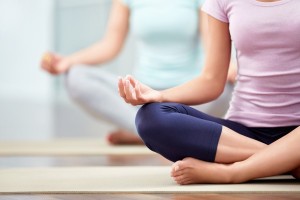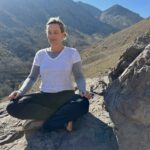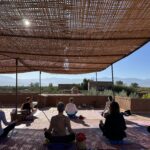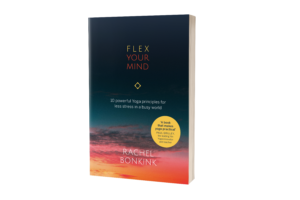 It’s just another Thursday morning and we just finished our yoga class.
It’s just another Thursday morning and we just finished our yoga class.
Tuning in with the breath, neck rotations, my crazy ankle flexes, some hip and heart openers, gentle twists, one sun salut, arm torture with the belts, forward folds, backward folds, warrior 1, 2, triangle, another sun salut, sphinx, seated twists and finishing off with several spinal twists. After a nice long savasana we did a cooling breath pranayama, as it was 26°C in class, and a short meditation.
This is more or less what our lesson looked like. Lame and easy? Maybe, but I didn’t mention who my students were: Meet M and J, 84 and 82 years old and they started with yoga classes several months ago. Check the sequence again.
Not only am I totally surprised every time by what they do in class (I might even consider crow pose in a couple of months, lol!), today I was more than surprised by what M asked me after class while enjoying our cup of tea.
” Say, Rachel, what’s the real purpose of meditation?”
Tricky question as I know both of them have read quite a few books on the topic. Last week J asked me out of the blue, just before class, if it was better to focus on the Sahasrara chakra first and then go down to the Muladara chakra in a meditation or if it was better to go the other way around…
Knowing that I didn’t have to talk about Samadhi or enlightenment with these two, I just explained what the effects of meditation were for me. A process from within to become more aware, and conscious of my thinking and emotions. It reduces my stress levels, it’s good for my peace of mind, concentration and it helps me in accepting the way of the universe. With a peaceful mind I tend to make fewer mistakes, make better judgments and decisions, and become more patient and tolerant. I miss it when I don’t meditate, which is sometimes just sitting on my mat and listening, observing the breath.
Big smiles on the other side. “But what if you already have all of this, just like that? Why would you still meditate? Why bother?”
My first thoughts:
Right, can we now please switch places? Here’s my mat :).
My answer:
Meditation also comes in handy, as there might be times when you don’t have the quiet mind. With regular practice, you train your mind to not have worries, anxieties fears and negative thoughts take over. You have a tool to recognize them early on and to work on it, slowly going into that zone of emotional stability again.
Nope, still not convinced….
Ok, let’s check the scientific side of things and zoom into the physical benefits. Hundreds of studies on meditation have been conducted since the 1950’s. Not always as scientifically correct as we would like them to be but still, there are too many by now to ignore.
Putting monks in MRI’s, hooking them up to EEG’s, showing how their bodies and brain change after meditating regularly. While the subjects meditated inside the MRI, the researchers periodically blasted them with disturbing noises. Among the experienced meditators, the noise had less effect on the brain areas involved in emotion and decision-making than among novice meditators. Among meditators with more than 40,000 hours of lifetime practice, these areas were hardly affected at all.
This deeper level of relaxation and a significant decrease in stress show to be accompanied by a decreased metabolic rate and a decreased high blood pressure. High blood pressure being one of the main causes for heart failure and all kinds of heart and kidney diseases. An improved state of the immune system even leads to less illness and a higher life expectation.
Being 82 and 84 and full of passion for life, this was an ok answer for my yogis.
This conversation stayed at the back of mind for a while and I realized that it’s as good as impossible to explain or write about meditation and its benefits. The literature and studies are there, but it’s mainly a matter of practising, doing it yourself. Whether it’s a minute per day, just observing your breath, an hour of quiet zen meditation or checking in for a Vipassana retreat (10 days of silence and meditation); you just have to give it a go and see what happens – without having the expectation that something will actually ‘happen’ :).
My two super star yogis didn’t have all day to chat about this most interesting topic. M had to go to work, she’s an interpreter (5 languages…) and still works at the court house, and J had a lunch date in a cool spot in town with a friend.
So grateful that I have the honour of having these yogis in my class. A great experience, every single time and very curious to see what questions they still have lined up for me!
As usual, if you like what you read, feel free to like and share this blog via the buttons below and if you have any thoughts or experiences with meditation, do share in the comments below!
Namaste,
Rachel








Leave a comment